Tokays - geckos with attitude
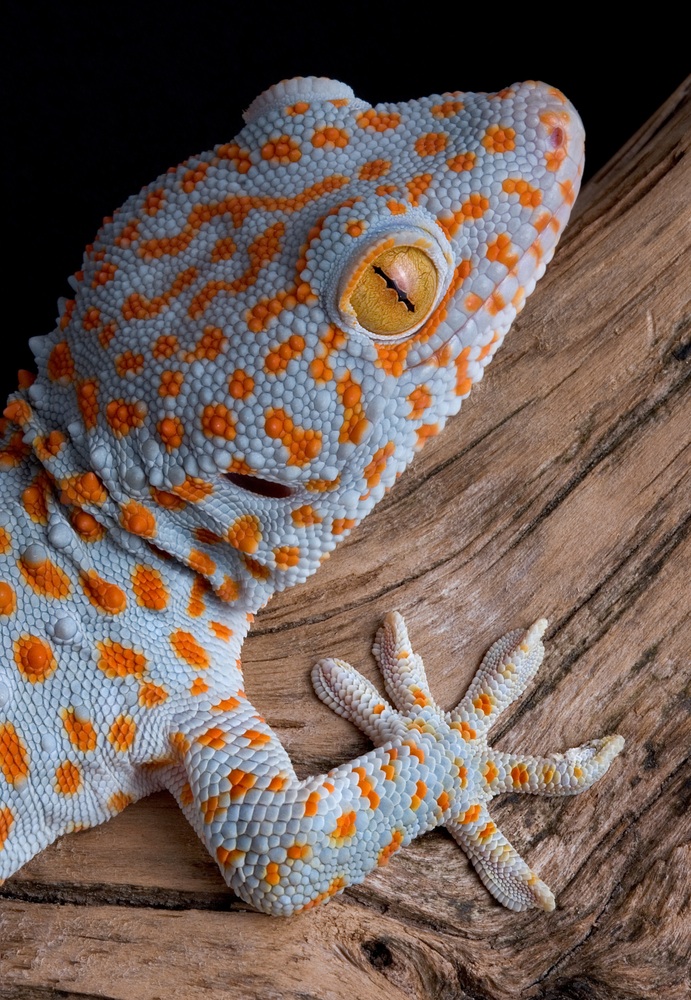
Firstly, they are bold by nature and have an impressive appearance, ranking amongst the largest of all living geckos. Their colouration is very attractive, although as with other lizards, it does vary somewhat, depending on their environment and mood. It can range from pale sky blue to a much darker, grey colour, offset with yellowish, orange or red markings.
Why tokay?
Tokay geckos (Gekko gecko) are surprisingly noisy, and both their common and scientific names represent the sounds of their calls. In fact, it is not just ‘tokay’ that comes from their call, but also the group name of ‘gecko’ - and ‘gekko’ as in this case.
Care
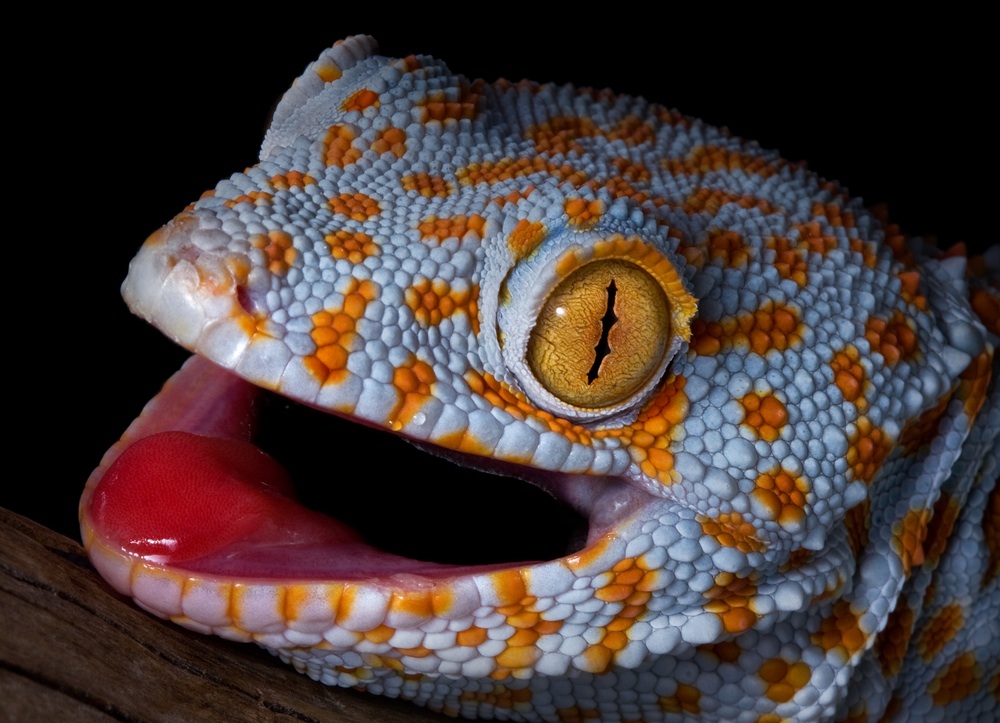
The care of this robust species is quite straightforward, and similar to that of other geckos, taking into account its larger size. Tokays require a tall vivarium, with plenty of climbing space, decorated with securely-positioned branches for this purpose.
Adequate retreats must also be incorporated here. In common with most geckos, the tokay is a nocturnal species, which will tend to hide away during the day, emerging to hunt at dusk.
Unfortunately however, male tokay geckos are not placid by nature, proving to be decidedly aggressive and territorial. They need to be housed separately, although a male can be accommodated with several females in suitably spacious surroundings. A glass vivarium is the best option, helping to maintain the necessary level of humidity in their quarters.
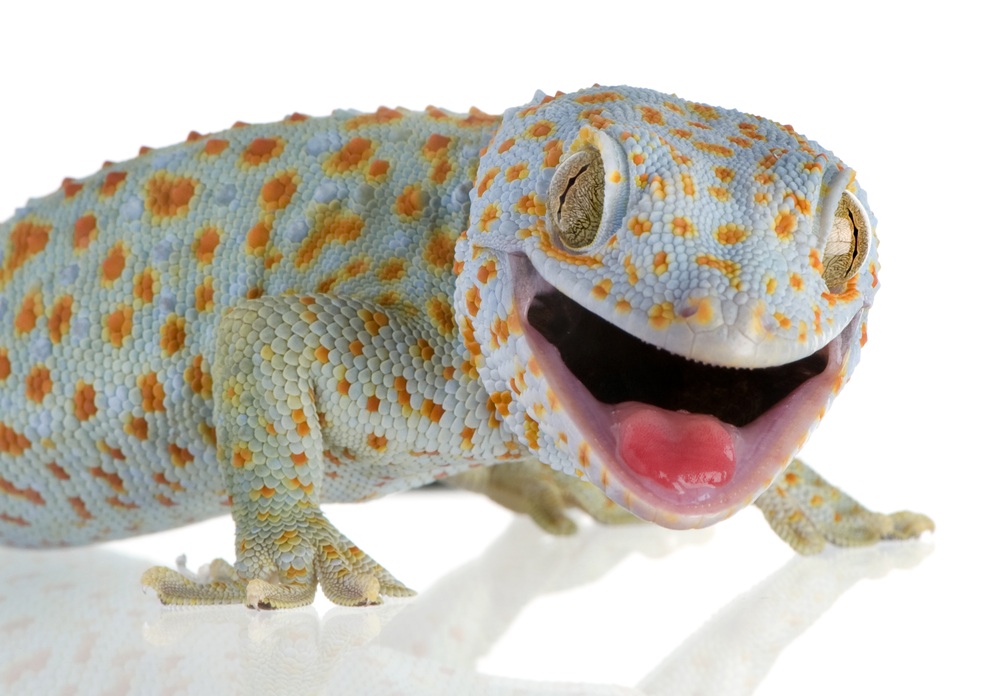
The temperature here during the day should be up to 32°C (90°F) at the hottest point, falling back to perhaps 21°C (70°F) in the coolest part of the vivarium overnight. A well-shielded heat source such as a ceramic heater should be used, bearing in mind that these geckos can easily burn themselves as they climb around their quarters. Special ultra-violet (UV) lighting is recommended as well.
The humidity must be increased by more frequent spraying when the tokayClimbing tokay gecko is shedding, to give a hygrometer reading between 80-90%. It is particularly important to keep a watch on the skin surrounding its enlarged toes, which it relies upon to walk up walls and other vertical surfaces. If this is not shed cleanly, then this is likely to tighten, cutting off the blood supply, which will ultimately result in the loss of the digit unless detected early. Humidity levels can also be maintained by using coconut fibre as the substrate, and a shedding hide containing damp sphagnum moss is also recommended.
Food and water
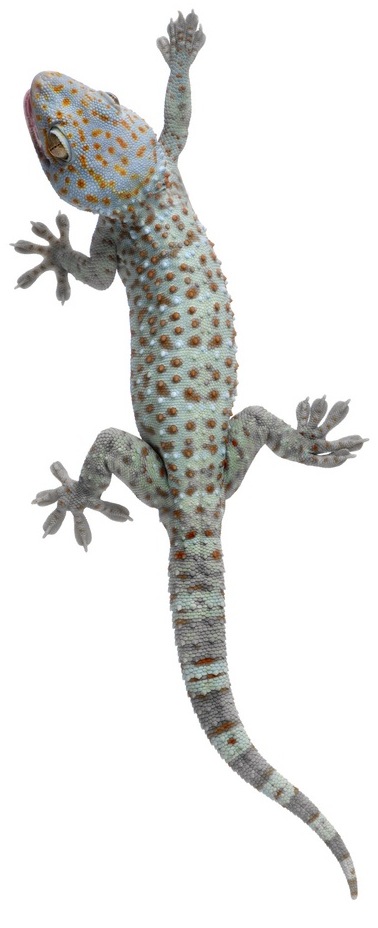
Tokays can also benefit from other types of livefood in moderation, such as locusts and mealworms of suitable size. Adults are also large enough to eat the occasional ‘pinkie’ mouse, as more commonly sold for snake food. A small bowl of water should be provided, but these geckos often prefer to drink water droplets when their quarters are being sprayed. (Be certain to keep water well away from the electrics).
Tokay data
Range: Much of southern Asia, often in rainforest, from north-eastern parts of India to Indonesia and the Philippines. Also introduced to parts of the southern USA, the Caribbean and Hawaii.
Size: Males 28-33cm (11-13in) / females 20-28cm (8-11in).
Weight: Up to 300g (10oz).
Average lifespan: 8-10 years, but may live for 20 years.
A determined nature
The reputation of the tokay as the ‘pit bull of the lizard world’ is a reflection of its aggressive nature. Although it is possible to tame these geckos, they need to be handled carefully. Aim to avoid being bitten at all costs, because once a tokay has anchored on to you, not only will this be painful, but it may remain attached to you for quite some time - up to an hour in some cases! Trying to force the lizard to release its grip directly can easily cause injury. The least stressful and safest method can be to put a drop or two of vinegar on its snout.
Breeding
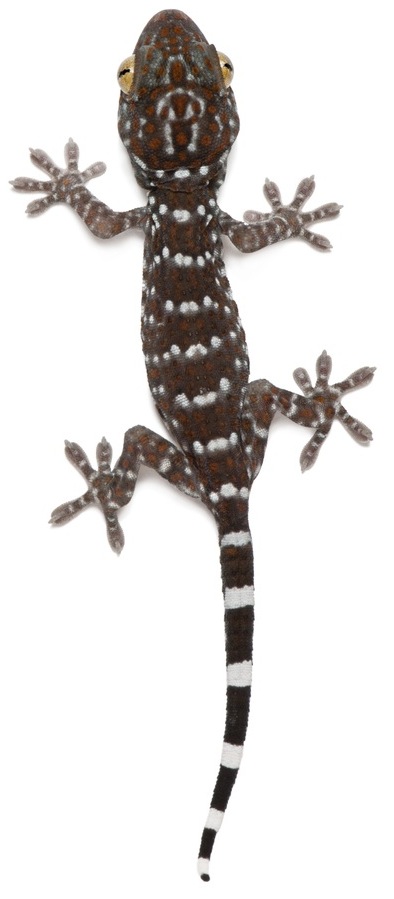
The first step - sexing - is quite straightforward with mature males being bigger and brighter in colour. They can also be sexed by examining their underparts, as they have very prominent femoral pores, forming a V-shaped pattern running down the upper part of both hind legs.
Twice daily spraying of the lizards’ quarters, to mimic the effect of the rains, and increasing the photoperiod by leaving the lighting on for an extra hour or two will serve as reproductive triggers. Calcium is a particularly vital part of the female’s diet at this stage, being the main constituent of the eggshell, and can be provided separately, in the form of grated cuttlebone or as a calcium powder.
In fairly typical gecko fashion, she will lay a clutch of two eggs, and attach these at a point around her quarters where they will set hard. They will need to be left here to hatch, as trying to remove them is likely to result in serious shell damage. The eggs are quite rounded in shape, with a diameter of some 2cm (0.75in). Females may lay several clutches during the year, often in the same part of the vivarium.
If it is possible to remove the eggs, should they have been laid on a piece of branch for example, then they can be transferred to an incubator, using a substrate of moist vermiculite. The incubation temperature is significant, in determining the sex of the offspring. It should be within the range of 27-30°C (80-86°F), with males being produced at the top end of this range and hatching earlier. The incubation period can be as short as 90 days, but may extend to 200 days or more.
The young geckos can be reared on a diet of gut-loaded crickets of suitable size. They should grow quite fast, and may be mature within their first year, but it will be better to wait until they are fully grown, particularly in the case of females, before allowing them to mate for the first time.
New colours
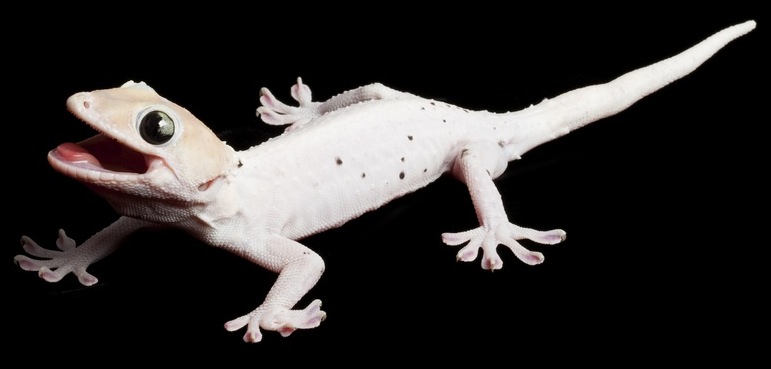
Another factor which has triggered renewed interest in these geckos is the emergence of colour mutations or 'morphs', although these are not necessarily as colourful as the native form. A leucistic example is shown here, but there are patternless powder blues, blue-headed greens, calicos and granites amongst others. Their genetics at this stage are not generally well-understood, although the patternless powder blue is known to be a straightforward recessive mutation.